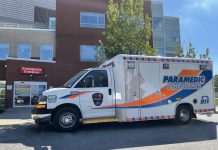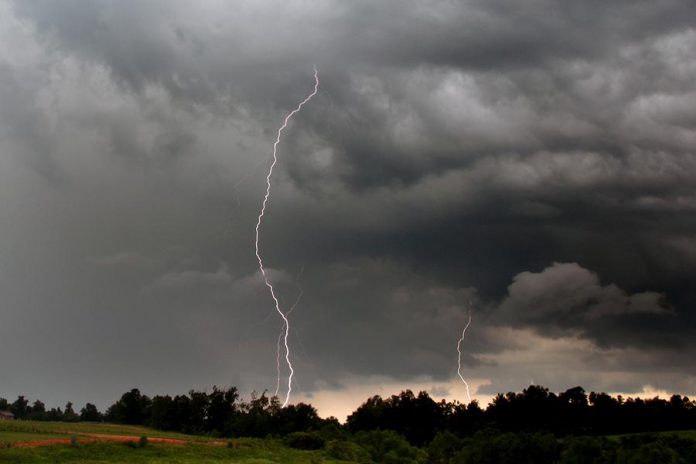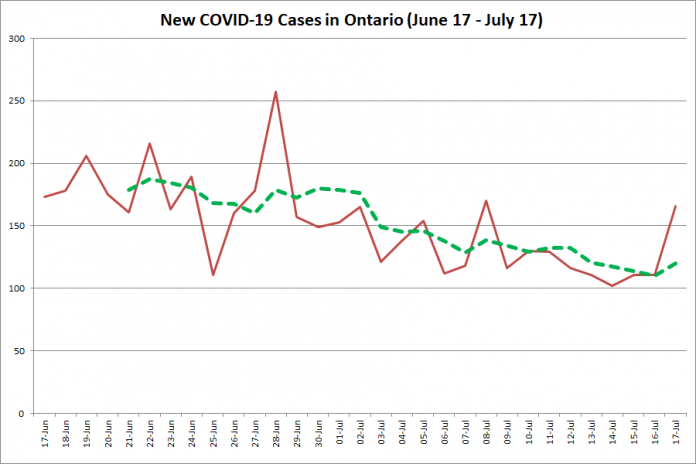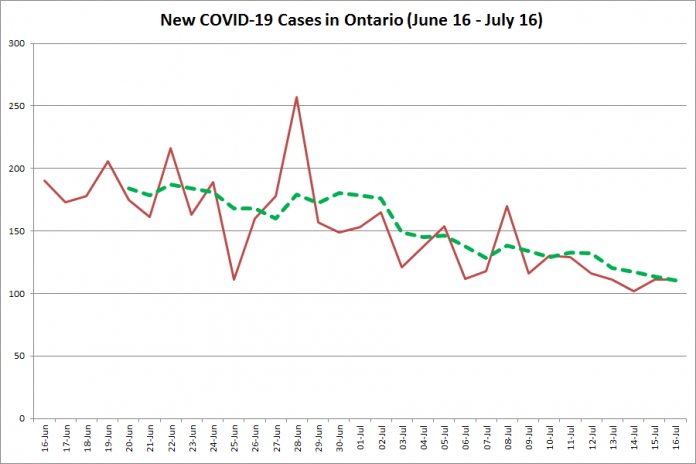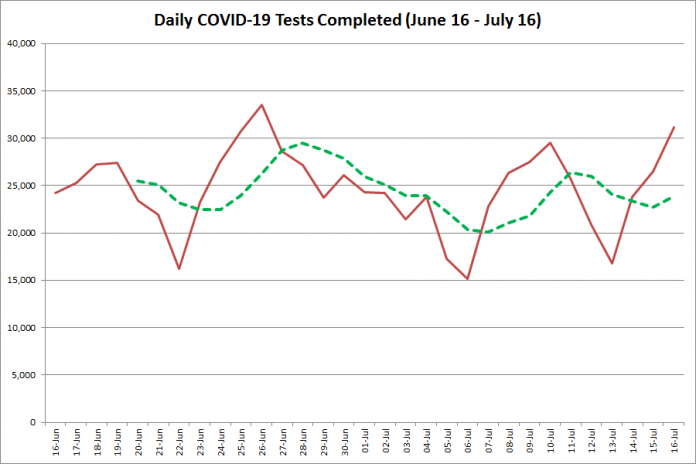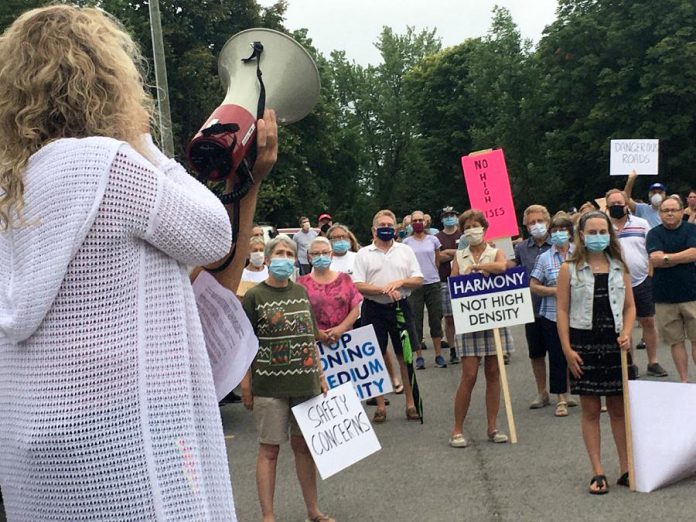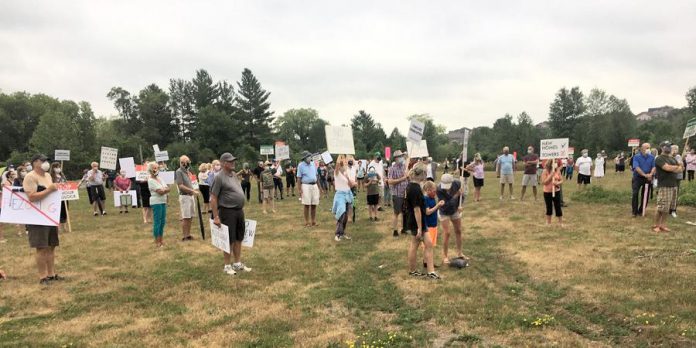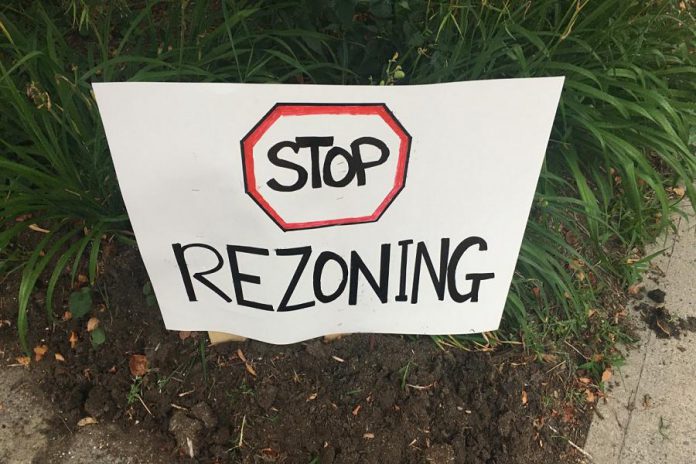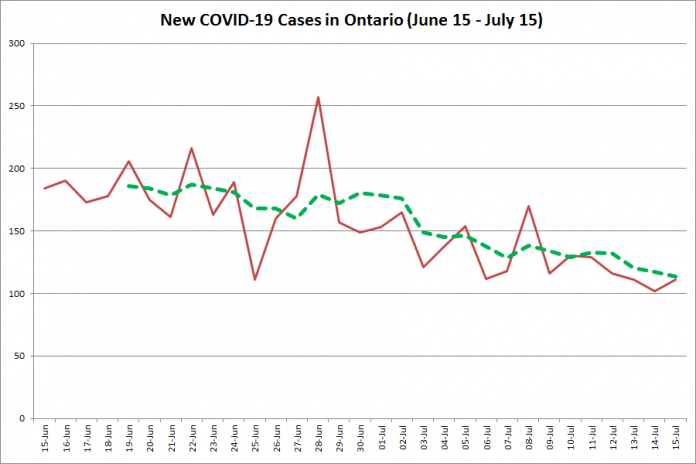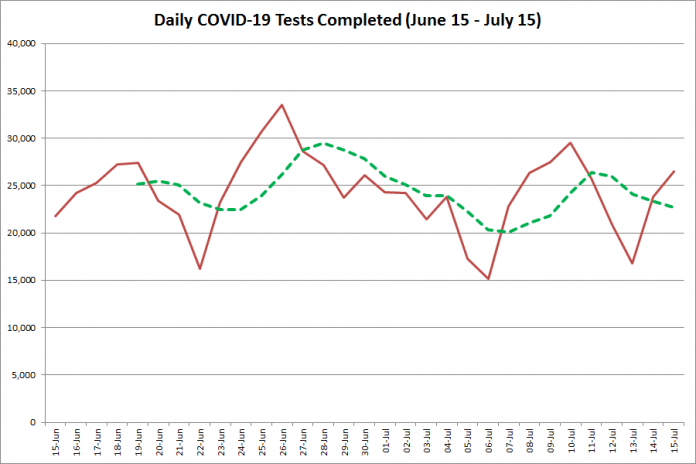kawarthaNOW is providing a daily report of COVID-19 cases in the greater Kawarthas region.
There are no new cases to report today in Peterborough, for the 29th day in a row. The last positive case was reported on June 20 and all cases are resolved.
For the second day in a row, Ontario has seen a small spike in new cases at 164 (166 cases were reported yesterday). These two days represent the largest increase in new cases in more than a week. Ontario health minister Christine Elliott says 28 of Ontario’s 34 public health units are reporting five or fewer cases, and that 37 of today’s cases are from Windsor-Essex with 48 from Peel region.
Health unit reports for Kawartha Lakes, Northumberland, Haliburton, and Hastings and Prince Edward are not available on weekends. The next reports will be available on July 20.
Since the pandemic began, there have been 95 confirmed positive cases in the Peterborough area (93 resolved with 2 deaths), 172 in the City of Kawartha Lakes (151 are resolved), 24 in Northumberland County (21 resolved), 10 in Haliburton County (10 resolved), and 43 in Hastings County and Prince Edward County (37 resolved).
There has been a total of 39 deaths since the pandemic began, with 32 of these deaths in Kawartha Lakes. The most recent death was reported on May 7 by Hastings Prince Edward Public Health.
Province-wide, there have been 37,604 confirmed cases, an increase of 164 from yesterday’s report, with 33,407 (88.8% of all cases) resolved, an increase of 113. There have been 2,751 deaths, an increase of 3 from yesterday, with 1,731 of the deaths being residents in long-term care homes, a decrease of 1 (no explanation is provided for the decrease). A total of 1,866,222 tests have been completed, an increase of 26,890 from yesterday, with 18,081 tests under investigation, a decrease of 6,470.
This report is based on data supplied by the province’s integrated Public Health Information System (iPHIS), as well as any additional information supplied by health units and hospitals. This information is at least 24 hours old, so it is not real-time data.
We publish the daily report, usually by late afternoon, with the most current information released by health units. Note that each health unit reports the information in a different way.
Peterborough Public Health
Peterborough Public Health’s service area is the City and County of Peterborough and the Hiawatha and Curve Lake First Nations.
Confirmed positive: 95 (no change, last positive case was on June 20)
Active cases: 0 (no change)
Deaths: 2 (no change)
Resolved: 93 (no change)
Total tests completed: Over 20,200 (increase of 150)
Institutional outbreaks: None (no change)
Haliburton, Kawartha, Pine Ridge District Health Unit
The Haliburton, Kawartha, Pine Ridge District Health Unit’s service area is the City of Kawartha Lakes, Northumberland County, and Haliburton County.
The health unit does not provide reports on weekends. Effective July 30th, the health unit will only be updating its report on Monday, Wednesday, and Friday, excluding statutory holidays. These numbers are from July 17; the next report will be available on July 20.
Confirmed positive: 206, including 172 in Kawartha Lakes, 24 in Northumberland, 10 in Haliburton (decrease of 1 in Northumberland)*
Hospitalizations: 14 (no change)
Deaths: 32 (no change)
Resolved: 182, including 151 in Kawartha Lakes, 21 in Northumberland, 10 in Haliburton (decrease of 1)
Institutional outbreaks: None (no change)
Hastings Prince Edward Public Health
Hastings Prince Edward Public Health’s service area is Hastings County (including Bancroft) and Prince Edward County.
The health unit is now only updating its report on Monday, Wednesday, and Friday, excluding statutory holidays. These numbers are from July 17; the next report will be available on July 20.
Confirmed positive: 43 (no change, last positive case reported on May 18)
Probable cases: 181 (no change)
Deaths: 5 (no change)
Hospitalized: 0 (no change)
Hospitalized and in ICU: 0 (no change)
Hospitalized and in ICU on ventilator: 0 (no change)
Recovered: 37 (no change)
Total tests completed: 14,531 (increase of 513)
Institutional outbreaks: None (no change)
Province of Ontario
Confirmed positive: 37,604 (increase of 164)
Resolved: 33,407 (increase of 113, 88.8% of all cases are resolved)
Hospitalized: 101 (decrease of 4)
Hospitalized and in ICU: 34 (increase of 1)
Hospitalized and in ICU on ventilator: 23 (increase of 1)
Deaths: 2,751 (increase of 3)
Deaths of residents in long-term care homes: 1,731 (decrease of 1, 62.9% of all deaths)*
Total tests completed 1,866,222 (increase of 26,890)
Tests under investigation: 18,081 (decrease of 6,470)
*No explanation is provided for the decrease in deaths.
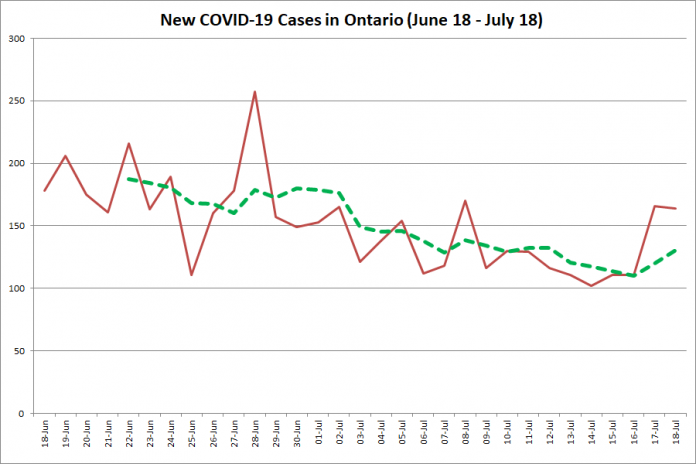

For more information about COVID-19 in Ontario, visit covid-19.ontario.ca.





